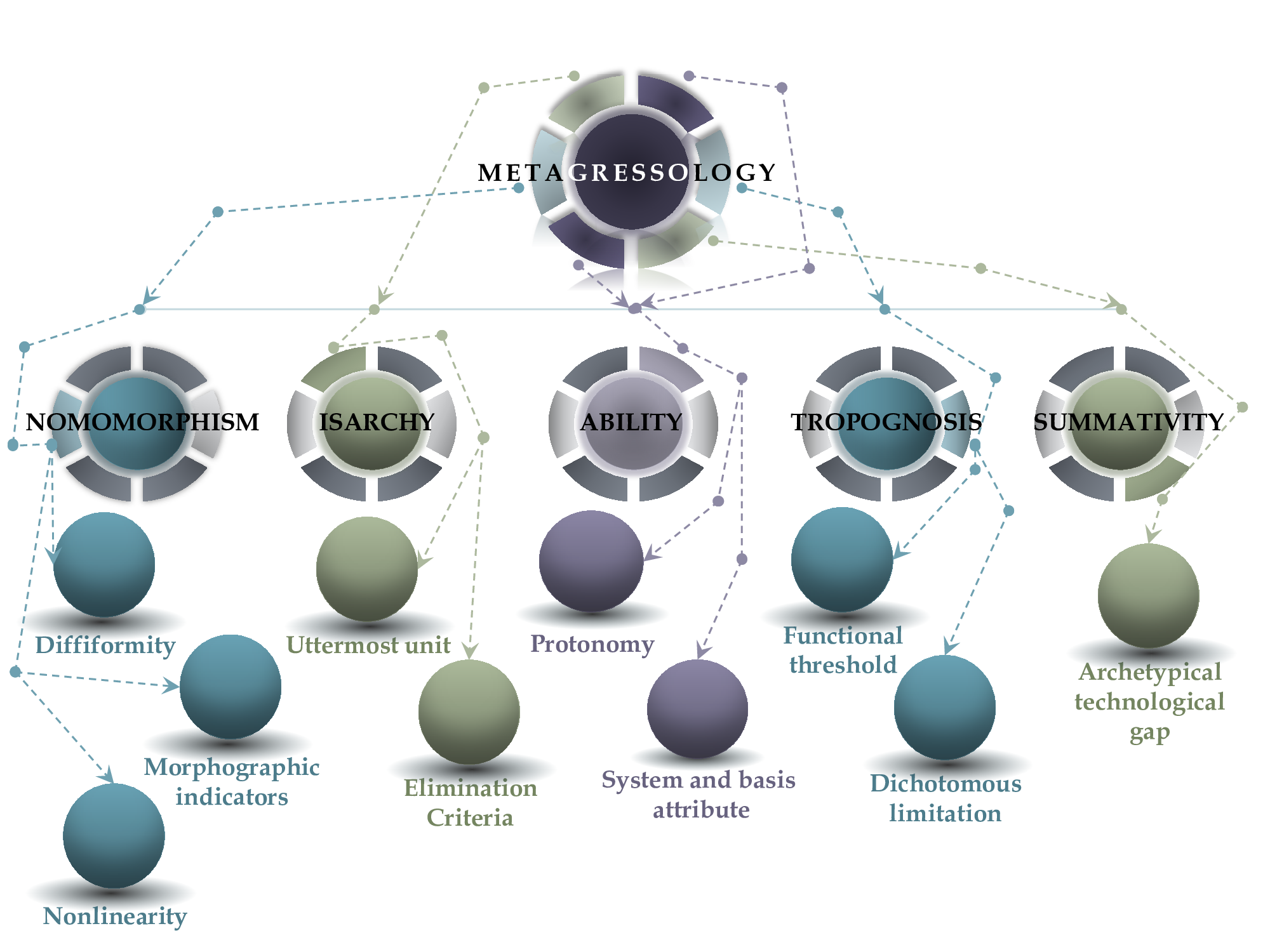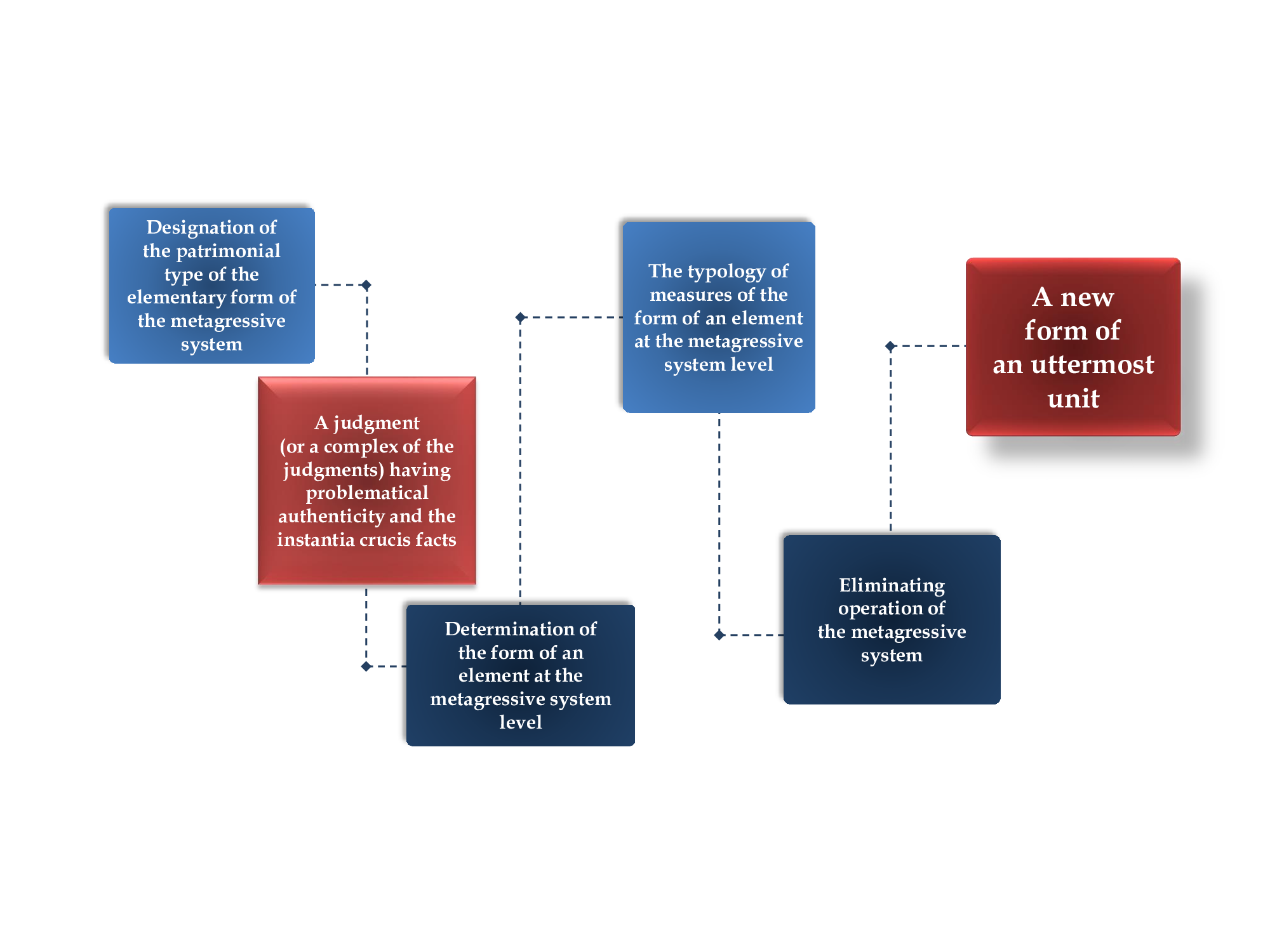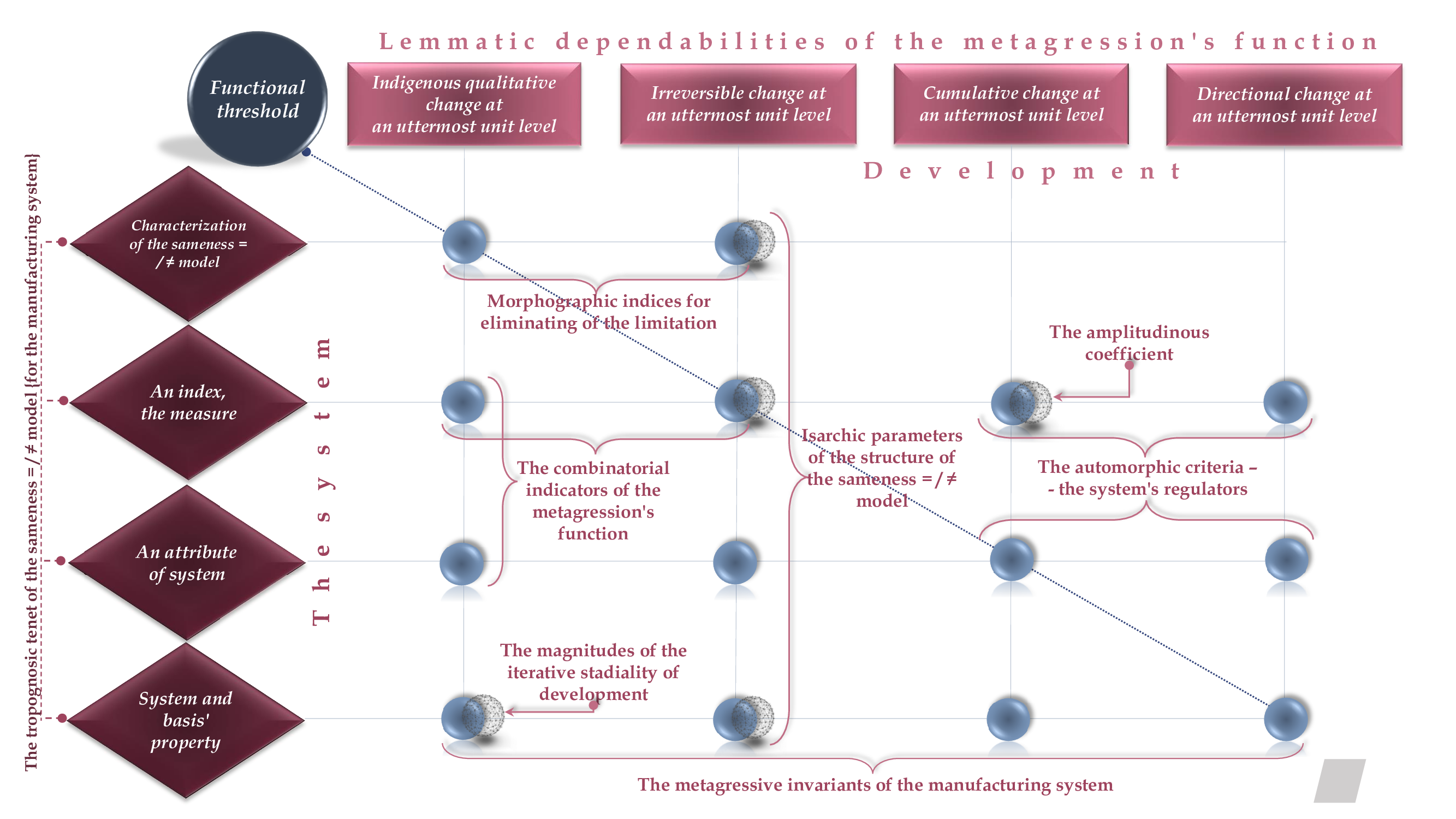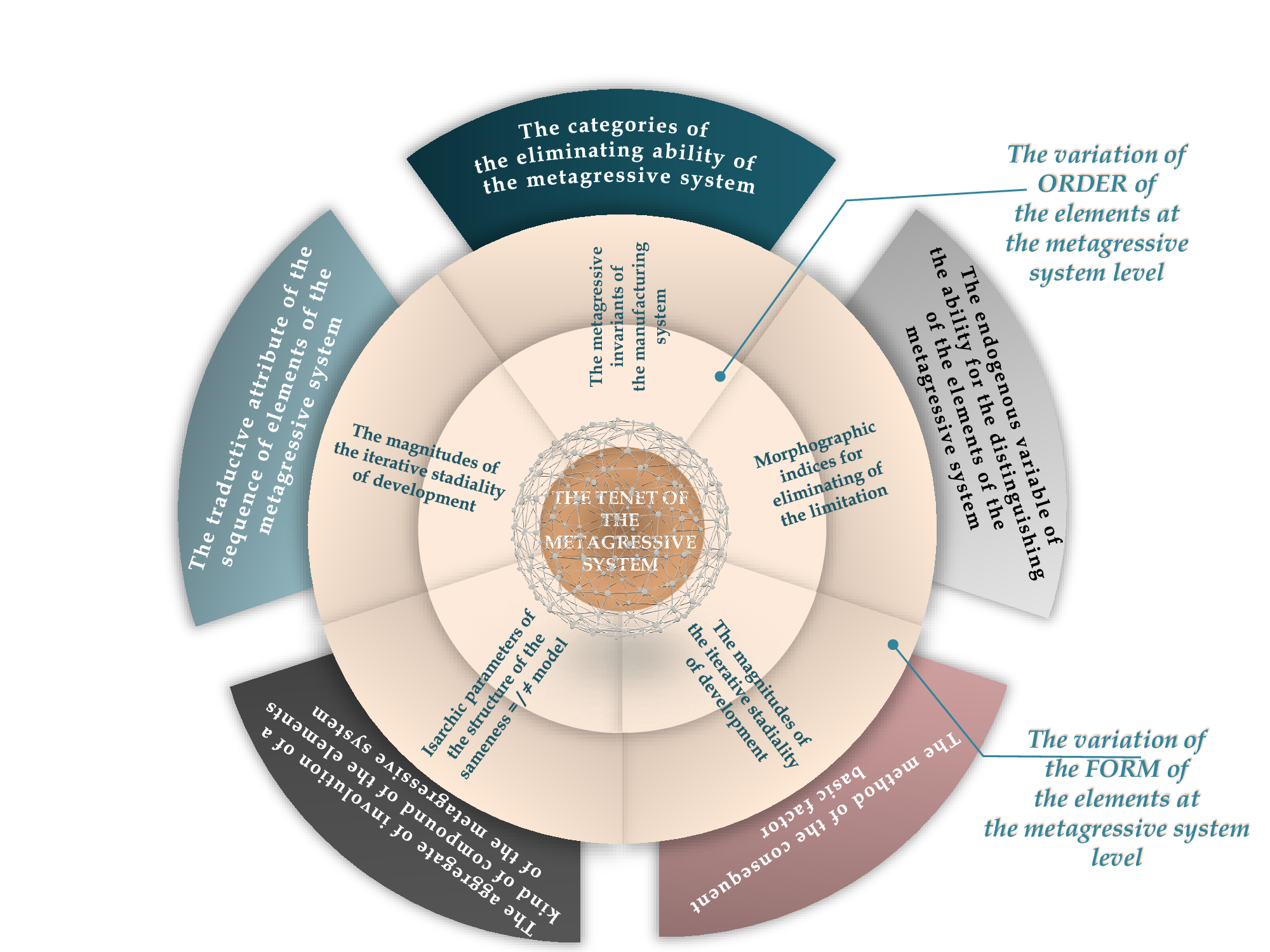Abstract
At present, economic development's primary condition is scientific and technological progress, which determines the economy's functioning. Innovative activity defines an enterprise's technological limits, revealing the qualitative and quantitative parameters for developing its economic system that sets at the bifurcation point the direction of subsequent movement. There is an objective need to form a fundamentally new economic relation, and consequently, the transformation of the types of economic activities that constitute a new combination of economic growth sources under conditions of becoming of our country's national economy. The principled question which constitutes the scientific problem of the research is the development of the economic mechanism of the apagogical (tropomorphic) functioning at an industrial enterprise level, which includes, in particular, the formulation and decision of the objective for constructing of the metagressive system at an economic entity level, based on the development of the method of the consequent primary factor, the discovery of the categories of the eliminating ability of the metagressive system, an ascertainment of the traductive attribute of the sequence of elements of the metagressive system, the calculus of the endogenous variable of the ability for the distinguishing of the elements of the metagressive system, the formation and measurement of the aggregate of involution of a kind of compound of the elements of the metagressive system, that constitutes the readiness of the manufacturing basis of an industrial enterprise to eliminate its functional threshold in order to forestall a technological gap.
Keywords: An isarchythe metagressologythe nomomorphismthe protonomythe terminological systemthe tropognosis
Introduction
Irreversible structural and institutional changes in the contemporaneous economy (Kochetkov & Kochetkova, 2020) condition the immanent elaboration of schemes and variations for cybernetical or functional modeling of innovative development at the industrial enterprise level, which serves as the basis for expanded reproduction (Kochetkov & Kochetkova, 2008).
The measuring of the structural relations of the functional algorithm for the occurrence of qualitative changes at the manufacturing system level (Haefner et al., 2021; Leppälä, 2020; Mudambi et al., 2018) is based on the conducted praxeological analysis of an innovative manufacturing and developed principles for functional design of an innovative system at the economic entity level (Dziallas & Blind, 2019; Elliott et al., 2016; Radziszewski, 2020) which provide an ascertainment of a functional dependability of the structural type of an enterprise on the level of development of its innovative capacity (Blind & Mangelsdorf, 2016; Jissink et al., 2019; Mahmood & Mubarik, 2020; van der Heiden et al., 2016) and determine the requirements for the development and usage of the methods for the economic evaluation of innovative activity at an industrial enterprise level (Campbell & Carayannis, 2016; Forrest et al., 2019; König et al., 2019; Verdú & Tierno, 2019) that, in its the turn substantiate an elaboration of the parametric system for measuring of an innovative development at the industrial enterprise level.
In the aspect of the above, it should be noted that developed by the authors the theory of metagression for industrial manufacturing is based, in particular, on the tenet of monogenic emanation, discovered by the authors, and serving to find the position of sign of the uttermost unity of developable manufacturing system at an industrial enterprise level as a function of the finite order by the instrumentality of the automorphic criteria that determine the technological sequence within the confines of the protonomic invariant, and in the range, on condition of existence of the spaces, the latent members (the elements) are displayed at the correct intervals, otherwise, stepping over the technological gap.
Presented by the authors in this scientific paper the prolegomena, the doctrine, the methodology and praxeology of the metagressology are the first in the world's economic science theory based on discovered by the authors the dependabilities of the newly preassigned (developed) metagression's function, described by the action of the regulator of the metagressive system namely the criterion of aplenomorphism, which determines the methods of polygenic elimination of the functional threshold of the manufacturing system at an economic entity level, that provides an unlimited resource for development.
Problem Statement
The research problem is to resolve the praxeologicalcontradictoriae between the ability to eliminate the functional threshold of the manufacturing system at the economy's entity level and the inability to change the protonomic invariant of innovative development at the industrial enterprise level.
Research Questions
Research hypothesis is the elaboration of the foundations of metagressology provides the development of the ability of the economy's entity to formation, in particular, the structure of the “supreme” order, which acts as an immanent element in the readiness of the manufacturing basis of an industrial enterprise to eliminate its functional threshold in order to prevent the technological gap that emanates from an unlimited resource of the development i.e. Experimentum crucis.
Cognition of the research subject, including the discovery of the tropognosic consistent patterns and lemmatic dependabilities of the metagression's function, and the categories of the eliminating ability of the metagressive system, ascertainment of the traductive attribute of the sequence of elements of the metagressive system, postulates, in the first instance, the immanent development of the terminological system of the metagressology in such a way that any definition of the notion included a designation on genus proximum et differentiam specificam (Trendelenburg, 1845) within the framework of the phase of developing for a taxonomy of the metagressive invariants of the manufacturing system (Figure

The development of the taxonomy of indicative systems for measuring of the innovative development of an industrial enterprise, as well as a methods for constructing of an innovative system at the economy's entity level based on a praxeological analysis of innovative manufacturing and developed principles for the functional designing of the industries, will provide the discovery of consistent patterns and dependences of an organization of the architectonic relations of an innovative system of an economy's entity, which, in its the turn will determine the development of the parametric system for measuring of innovative development of an economy's entity based on taxonomy of the elimination criteria of the functional thresholds of the manufacturing system at the industrial enterprise level.
Purpose of the Study
The research aims to develop the authors’ metagressological theory based on the authors' methodology for measuring the functional threshold of the manufacturing system of an economy's entity that forms an attribute, necessary and sufficient. It is a system-forming property characterized by a group of the first-level notions on the Functional regularities of the technological development regulation, such as isarchy, protonomy, tropognosis and nomomorphism of the parameters of the functional threshold, capable of providing a controlled higher functional change of the uttermost unit (Figure

The research's praxeological results include the developed system of parameters for the elimination of the functional threshold of the metagressological property of the economy's entity, which act as one of the elements of the economic mechanism for regulating the innovative system of the economy's entity.
Research Methods
Research methodology includes the methods formalizing description and analysis of the ways to achieve goals (the structural analysis of an industrial system, the multicriteria measurement of the innovative capabilities, a functional simulation, a morphological analysis, synthesis), and methods of conceptual design.
This unconditionally requires the development of the certain economic instruments (Figure

Developed by the authors the methods of polygenic elimination of the functional threshold of the manufacturing system at an economic entity level is based on the complex discovered by the authors of the dependabilities of the metagression's function described by the action of the regulator of the metagressive system, concretely the criterion of aplenomorphism, which is expressed by the results of calculating of the following groups of quantitative aggregates: Morphographic indices for eliminating of the limitation, the combinatorial indicators of the metagression's function, the magnitudes of the iterative stadiality of development, isarchic parameters of the structure of a sameness = / ≠ a model, the amplitudinous coefficient, the automorphic criteria - the system's regulators, the metagressive invariants of the manufacturing system, which, in its turn, provides the implementation of the tropognosic tenet of the metagressive system at an industrial enterprise level.
Findings
The research results include the developed system of indicators for the elimination of the functional threshold of the metagressological property of an industrial enterprise, which act as one of the elements of the economic mechanism for regulating the innovative system of the economy's entity.
The constructing of the metagressive system at an economic entity level based on the development of the method of the consequent basic factor, the discovery of the categories of the eliminating ability of the metagressive system, an ascertainment of the traductive attribute of the sequence of elements of the metagressive system, the calculus of the endogenous variable of the ability for the distinguishing of the elements of the metagressive system, the formation and measurement of the aggregate of involution of a kind of compound of the elements of the metagressive system (Figure

The methodical approach was offered for the economic evaluation of an enterprise's innovative activity, which facilitates the identification of the factors and conditions of a transformation of the industrial enterprises in the manufacturing systems of the metagressive type.
Conclusion
The main conclusion should be considered that the authors developed the measuring methodology for the functional threshold of the manufacturing basis of industrial enterprise is the foundation of the economic mechanism for regulating the innovative system at an economic entity level, which ensures expanded reproduction in the long term.
References
- Blind, K., & Mangelsdorf, A. (2016). Motives to standardize: Empirical evidence from Germany. Technovation, 48-49 (February-March), 13-24. DOI: 10.1016/j.technovation.2016.01.001
- Campbell, D. F. J., & Carayannis, E. G. (2016). The academic firm: A new design and redesign proposition for entrepreneurship in innovation-driven knowledge economy. Journal of Innovation and Entrepreneurship, 5, 12. DOI: 10.1186/s13731-016-0040-1
- Dziallas, M., & Blind, K. (2019). Innovation indicators throughout the innovation process: An extensive literature analysis. Technovation, 80-81 (February-March), 3-29. DOI: 10.1016/j.technovation.2018.05.005
- Elliott, G., Ghanem, D., & Krüger, F. (2016). Forecasting Conditional Probabilities of Binary Outcomes under Misspecification. The Review of Economics and Statistics, 98(4), 742-755. DOI: 10.1162/REST_a_00564
- Forrest, J. Y.-L., Lin, C. C., Mondal, S., & Tucker, R. (2019). Environmental Forces underneath the Innovativeness of Manufacturing Firms. Theoretical Economics Letters, 9, 1353-1382. DOI: 10.4236/tel.2019.95088
- Haefner, N., Wincent, J., Parida, V., & Gassmann, O. (2021). Artificial intelligence and innovation management: A review, framework, and research agenda. Technological Forecasting and Social Change, 162 (January), 120392. DOI: 10.1016/j.techfore.2020.120392
- Jissink, T., Schweitzer, F., & Rohrbeck, R. (2019). Forward-looking search during innovation projects: Under which conditions it impacts innovativeness. Technovation, 84-85 (June-July), 71-85. DOI: 10.1016/j.technovation.2018.07.001
- Kochetkov, S. V., & Kochetkova, O. V. (2008). Complex use of an innovative capacity is a basis of development of the Russian industrial enterprises. Vestnik of Samara State University of Economics, 7(45), 47-52.
- Kochetkov, S. V., & Kochetkova, O. V. (2020). Innovative development of the economy: The methodology questions and an effectiveness evaluation. The Economist, 3, 76-87.
- König, M. D., Liu, X., & Zenou, Y. (2019). R&D Networks: Theory, Empirics, and Policy Implications. The Review of Economics and Statistics, 101(3), 476-491. DOI: 10.1162/rest_a_00762
- Leppälä, S. (2020). Innovation, R&D Spillovers, and the Variety and Concentration of the Local Industry Structure. The Scandinavian Journal of Economics, 122(3), 1231-1255. DOI: 10.1111/sjoe.12368
- Mahmood, T., & Mubarik, M. S. (2020). Balancing innovation and exploitation in the fourth industrial revolution: Role of intellectual capital and technology absorptive capacity. Technological Forecasting and Social Change, 160(November), 120248. DOI: 10.1016/j.techfore.2020.120248
- Mudambi, R., Narula, R., & Santangelo, G. D. (2018). Location, Collocation and Innovation by Multinational Enterprises: A research agenda. Industry and Innovation, 25(3), 229-241. DOI: 10.1080/13662716.2017.1415135
- Radziszewski, P. (2020). Exploring the development of an innovation metric - from hypothesis to initial use. Journal of Innovation and Entrepreneurship, 9, 10.DOI: 10.1186/s13731-020-00118-4
- Trendelenburg, Ad. (1845). Elementa logices Aristoteleae. Brl.: Sumtibus Gustavi Bethge.
- van der Heiden, P., Pohl, C., Mansor, S., & van Genderen, J. (2016). Necessitated absorptive capacity and metaroutines in international technology transfer: A new model. Journal of Engineering and Technology Management, 41(July-September), 65-78. DOI: 10.1016/j.jengtecman.2016.07.001
- Verdú, F. M., & Tierno, N. R. (2019). Clustering and innovation: Firm-level strategizing and policy. Entrepreneurship & Regional Development, 31(1-2), 1-6. DOI: 10.1080/08985626.2018.1537143
Copyright information

This work is licensed under a Creative Commons Attribution-NonCommercial-NoDerivatives 4.0 International License.
About this article
Publication Date
16 April 2021
Article Doi
eBook ISBN
978-1-80296-104-1
Publisher
European Publisher
Volume
105
Print ISBN (optional)
-
Edition Number
1st Edition
Pages
1-1250
Subjects
Sustainable Development, Socio-Economic Systems, Competitiveness, Economy of Region, Human Development
Cite this article as:
Kochetkova, O., & Kochetkov, S. (2021). The Initial Fundamental Of Terminological System For Metagressive Function Of Manufacturing Basis. In E. Popov, V. Barkhatov, V. D. Pham, & D. Pletnev (Eds.), Competitiveness and the Development of Socio-Economic Systems, vol 105. European Proceedings of Social and Behavioural Sciences (pp. 1236-1242). European Publisher. https://doi.org/10.15405/epsbs.2021.04.130

